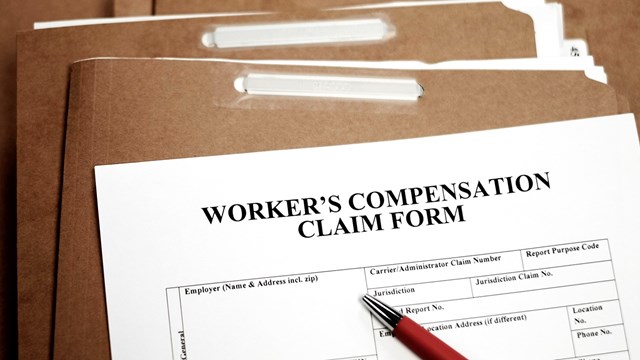Those who handle the management of any kind of residential building deal with contractors and contracts regularly—but they aren’t the only ones who should know about the process. It’s not necessarily an arcane topic—whether the project is a major roof repair or complete window replacement, the construction process is usually pretty much the same. But what if mistakes are made in the construction process, either by the managing agent, a consultant or someone else in charge of these matters? Who’s responsible? Whose insurance coverage comes into play? What recourse exists for building communities having problems with their contractors?
Though a building’s managing agent is usually the one responsible for handling these construction-related transactions, board members also should have at least a passing knowledge of what documents, insurance and professional certifications are needed by anyone doing work for their building. It’s a simple question of boards doing what they can to protect themselves from unnecessary liabilities. It’s also a matter of residents working to protect the equity they’ve established in their homes, which for many is their largest asset.
Checking Credentials
So board members have settled on a bid from a qualified contractor, who appears capable and ready to do the job. Everything appears to be in order. Short of signing the contract and telling the contractor to go to work, what’s next? Those who are overseeing the construction project need to obtain from the contractor, and thoroughly inspect, all of the necessary paperwork for the project, says Peter Lehr, director of management for Kaled Management Corp. in Westbury.
“Check their certificates and insurance coverages, and make sure they’re all up-to-date,” Lehr says.
A building’s management should obtain a certificate of insurance liability from the contractor. This sounds simple, but it is not necessarily a simple matter. The scope of the project should determine how much insurance is needed, and board members and others overseeing the construction process should realize that some contractors will mistakenly (or intentionally) under-insure themselves on some projects. Verifying the specificity of credentials and coverage is of the utmost importance. A contractor performing exterior work on a building in which scaffolding is involved, for example, should have evidence of adequate insurance coverage for the job.
Contractors doing work on a building also should carry workman’s compensation/disability insurance. Failure to do so could ultimately leave residents of a building on the hook if a worker is injured during the course of the project—even if the contractor should have had covered by his or her employer’s insurance. Similarly, ensuring that all tradesmen working on a project are licensed in their respective trades (when the trade has such licensing, of course) is also essential to the sound management of a construction job. Landscapers, for example, must have a permit through the EPA in order to legally use pesticides, Lehr says, and anyone erecting a scaffold or sidewalk shed must be licensed to do so.
Scrutinize such permits and licenses, Lehr advises. “The management company should be ensuring the certificates and licenses are valid,” he says.
Managing agents, board members and other interested residents should keep an eye on the details of a construction contract, as well as permits, licenses and insurance, says Wayne Bellet, owner of Bellet Construction, a third-generation New York City exterior contractor. “The first thing they need from me is my rigger’s license. They also should ask how long I’ve had the license,” he says.
It is important, before signing a contract, that board members and the managing agent ask the contractor to provide references. Getting those references is not the end of it, however—checking the references is even more important than obtaining them. Bellet recommends doing due diligence to determine whether a contractor or firm has had any serious legal problems resulting from a botched job or from accidents on projects. A simple Internet search can help you determine if the company is legally licensed to do business in the state.
Reviewing Paperwork
Long before signing a contract and allowing work to start on a building’s construction project, the board and manager should have specifications of the job written up for the contractor’s review, says Marcie Waterman Murray, a principal with the Manhattan-based law firm of Deutsch Tane Waterman & Wurtzel, P.C. These job “specs” should be written by a qualified, licensed architect or engineer, and should describe the work to be performed thoroughly and correctly to avoid problems as the project progresses.
The price of the project and the timeframe in which it will be completed are important to have in the contract, of course. Timeframes can be tricky—contractors often work under multiple deadlines, and some like to land and start more projects than they can finish in a timely manner. Make sure that the contractor is bound to the timetable agreed upon in the contract for the work. And make sure that the professionalism of the work is contractual, too.
“The quality of work is in the eye of the beholder,” says Murray. “That’s why the contract is so important.” That means spelling out the kinds of finishes and surface treatments expected, as well as things that might seem trivial—like cleaning up the work-site afterwards—that can become major points of contention if they’re not handled properly.
The board and manager also should know, prior to work beginning on a project, if the building wants to pay for a performance and a payment bond. A performance bond ensures that a project will be finished even if the contractor working on it goes bust or can’t finish the job. A payment bond provides a building with assurance that subcontractors and materials costs will be paid, regardless of the primary contractor’s circumstances.
According to Murray, having the right type and the correct amount of insurance for a project is an issue that should be left to professionals. The building’s attorney must write a good insurance provision into the contract.
Having adequate proof of a contractor’s insurance is essential, since there are so many things that can go wrong with a project, and also because there are unscrupulous contractors who will try to avoid shelling out for adequate coverage. Murray relates an instance in which a contractor working a job in a building she advised presented expired insurance credentials that he had altered to make them appear current. Because of that experience, Murray recommends that a building’s attorney obtain original certificates of insurance from the contractor—absolutely no faxes, she says. The contractor who doctored his paperwork for Murray’s building ended up having problems with the project, and the insurance issue became more important because of it, she notes.
“Having a good insurance paragraph [in the contract] is very important. Contractors know how to work on a shoestring,” Murray says.
Murray also advises that a building’s attorney get a copy of the firm’s contractors’ blank endorsement page. The page will show that the contractor has coverage, if needed, of additional insurers.
With construction work to be done on residential buildings, the devil—and the saving grace—is in the details of the contract for the work. Murray’s firm specializes in work dealing with co-ops and condos, and part of that work is creating contracts for construction work to be done on clients’ buildings. Sometimes, a contract should specify not only the type of materials to be used in the project, but also how those materials should perform, she says.
“Windows should have a performance standard,” Murray says. “It should state there will be no condensation unless the temperature drops below x degrees.”
Projects That Go Awry
Verification of a contractor’s adequate and current insurance is crucial, because if there’s a problem during or even after construction, the party most liable often is the building owner.
“The only way to protect yourself is to hire qualified contractors who are licensed and properly insured,” Bellet says. “I can’t tell you how many people aren’t insured to do work they are doing.”
Other methods also are useful in ascertaining the dependability of a contractor. Asking for and checking the contractor’s references is important. But how fast does the contractor return the managing agent’s phone call? And did the contractor reach his bid on the project soon, or was it delayed, and if so, why?
“It’s a big dry run before there’s a problem,” Bellet says.
In every case, the building’s management company should be reviewing the licenses and certificates of the contractor, and ensuring that those documents are valid. Subcontractors that are employed by the general contractor are the responsibility of the contractor. Larger companies should be able to perform the work with their own workers, which takes any potential problems with subcontractors out of the picture.
But if a bad contractor slips through the review process, and a hired contractor doesn’t have adequate insurance or the right permits, what should a building’s management do? Is it preferable to give the contractor some sort of grace period in which to comply? Or should the company be fired, and another company brought in to do the work?
Sometimes, according to the professionals interviewed, the path of least resistance might be the best way to go.
“If a contractor already has been hired, and his experience and references look good, it’s probably easier to let him get his insurance together than it would be to replace him,” Lehr says.
Jonathan Barnes is a freelance writer who contributes to The Cooperator and other publications.







Comments
Leave a Comment